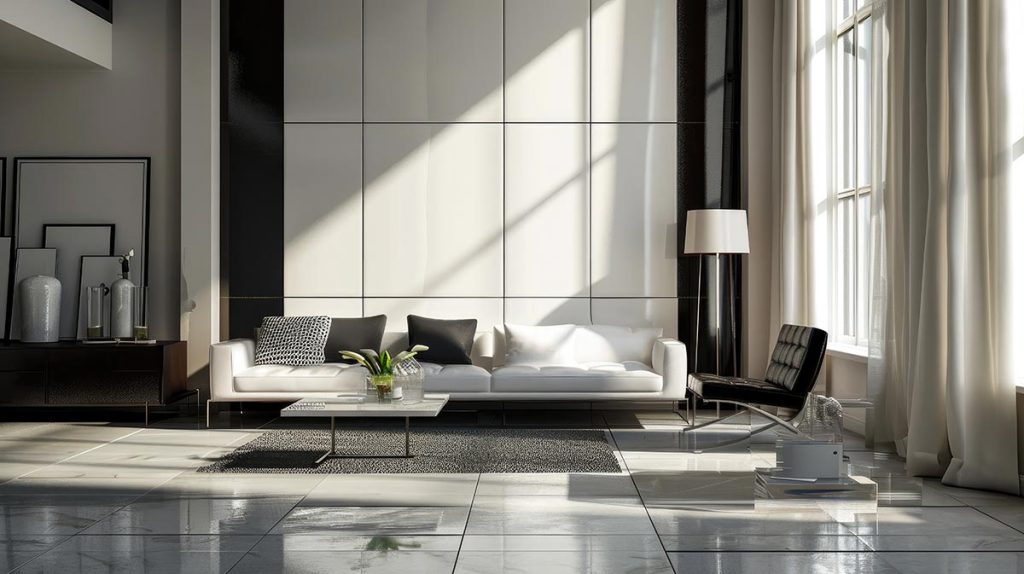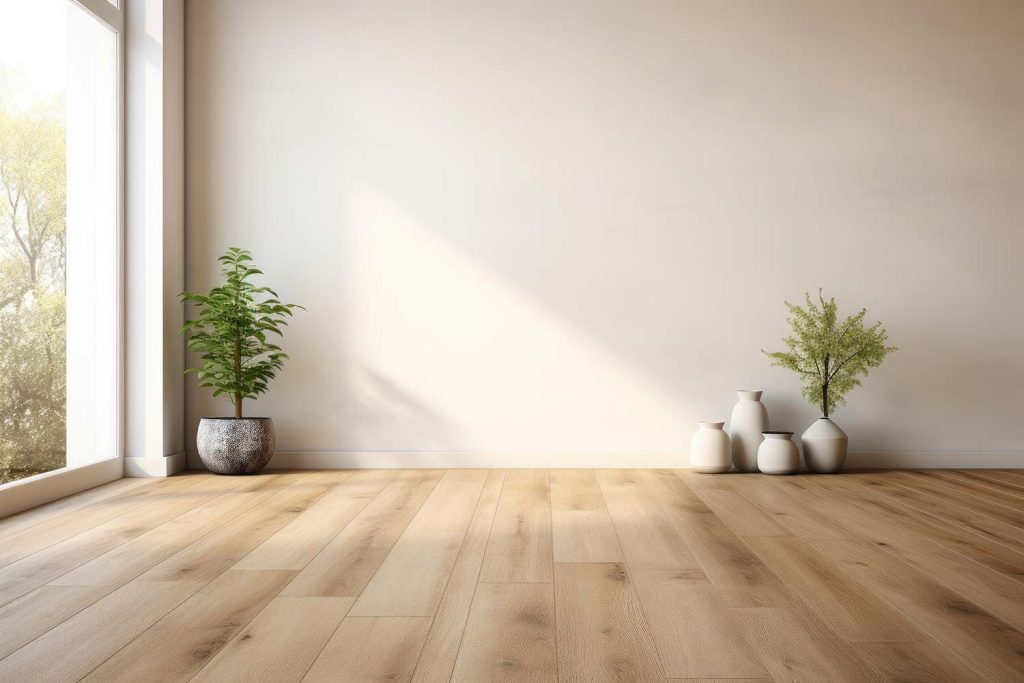MEASURING FLOOR REQUIREMENTS – IN SQUARE METRES
To calculate how much flooring you will need, you could use a tape measure or similar device to determine your room’s length and width. (If you have irregularly shaped floors, you may find it helpful to divide the floors into individual sections, calculate the square feet of each section, and then add them together). Once you determine those measurements, you would multiply the length by the width to arrive at the cost per square metre.
USING THE TILE SIZE AND SHAPE TO YOUR ADVANTAGE
Nowadays, floor tile is available in many designs, styles, and sizes. From one-inch mosaics to large format planks, there are tons of tile options to fit your needs for any size room. Choosing a tile that adds dimension, uniqueness or pops of color can be fun when you know how to blend different shapes and sizes to meet your design goals. Consider these following tips when selecting different tile sizes to spruce up your space or achieve distinctive looks.
SMALLER TILES HELP ROOMS FLOW
Tiny tiles can help improve the flow of small floor plans when the spacing between the sink, toilet, cabinets, and other bathroom fixtures is compact. Small tiles like mosaic tiles require fewer cuts, which ultimately offers a more streamlined look.
LARGER TILES MAKE SMALL ROOMS APPEAR BIGGER
Because grout lines are thinner and fewer as part of the layout, smaller rooms appear bigger when using larger tiles. Large-format tiles make floors look more streamlined – therefore, creating the illusion of more space. If you’re incorporating wall tile in smaller rooms too, consider a proportionate tile for the size of the room.
It’s important to note that wall tile should be complementary and must never be larger than the floor tile. Using wall tile that is larger than floor tile upsets the balance and proportional look of the room.
COLOUR & DESIGN
LIGHT COLOUR paler shade of wall and floor tiles reflect light which will visually open up a space, whereas darker tones absorb light which will make the room feel smaller but more cosy. Glossy or glazed wall & floor tiles will bounce light, making the room feel larger, whilst matt tiles will absorb light and heat. .
TILE SHAPE IMPACTS ROOM ARTICULATION
Instead of a common tile design, add interest and depth to your space by utilizing a unique shape or pattern. Diagonal tiles, for example, can make a narrow room appear wider. For an extra-large room, add a border of contrasting rectangular-shaped tiles to define your space. There are also mosaic tile shapes, like arabesque, that can create unique specialty designs. You can use these different shapes in a strip to offset traditional square tiles or to create your own attractive accent walls.
CONSERVATIVE CHOICES ARE COMFORTABLE. Highly patterned tiles will dominate and visually ramp up how busy the room is, so opting for plainer or subtly patterned tiles is advisable if you want to avoid making a space feel cramped.
MATCHING WALL & FLOOR TILES will give your space a harmonious feel when done correctly. Tiles which match, or are similarly toned, will make a room appear larger. On the other hand, two extreme and contrasting shades will visually ‘cut up’ the space.
GIVE CONSIDERATION TO THE CONFIGURATION of your floor tiles. The best pattern for adding space is a standard grid or elongating diamond layout. Following the principle of avoiding busy-ness, brickbond or staggered patterns will look busier and therefore make the room appear more limited.
RECTIFIED FLOOR TILES rectified floor will allow you to minimise the width of your grout joints, another great way to make a room look more spacious. Choosing a complementary or matching coloured grout, rather than a contrasting one, will help grout lines blend and look seamless.














